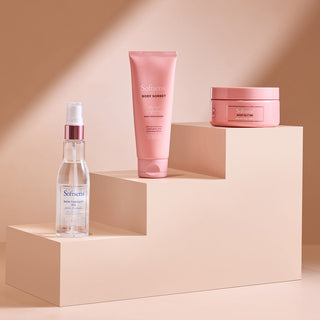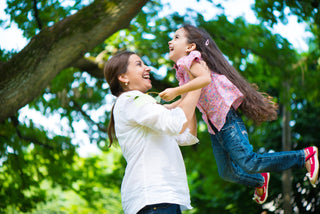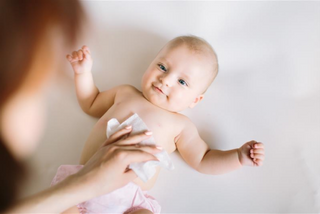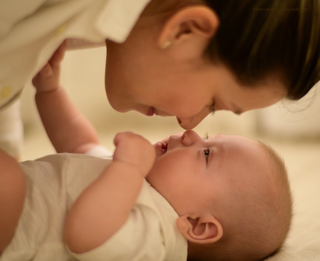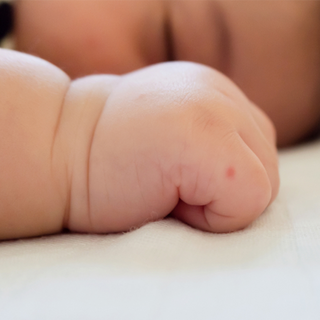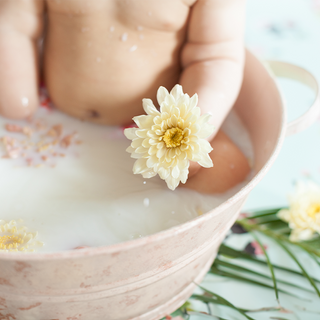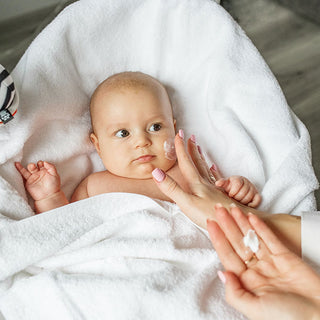
Hey Moms & Dads - worried that your baby’s hair isn’t growing too fast or that it’s too scanty or thin? Don’t worry, you’re not the only ones. Baby hair growth & hair loss is a topic of much concern among new parents. The good news? There isn’t really much to stress about. Why not? Well, hair(s) what you need to know.
As newborns, some babies have a head full of lush, thick hair, while some are bald or have very little hair. However, your baby will lose most of this newborn hair within their first six months, due to hormonal shifts. Don’t be alarmed – this initial hair fall in babies is absolutely normal. After this happens, your infant will soon grow new hair, which might actually be pretty different in texture and even colour, than their newborn hair. This new hair growth usually takes place anytime between 4 months to 2 years of age.
Simply put, infant hair loss is normal and shouldn’t be a cause of concern. However, there are still many ways in which you can help speed up your baby’s hair growth and promote healthier, stronger & better baby hair. Here are 10 effective tips to help boost baby’s hair growth:
- Give baby a regular scalp massage with a safe & effective baby hair oil
Massaging your baby’s scalp regularly with a baby-safe hair oil can boost blood circulation to the scalp, and thus accelerate hair growth. It’s important to choose the correct baby hair oil for this purpose. Pick one that is specially formulated for your baby’s sensitive skin and includes natural ingredients that have hair & scalp nourishing properties.
Softsens Baby Natural Hair Oil is a perfect bio-nourish blend of 7 natural seed oils – olive, linseed, coconut, sesame, jojoba, argan and almond. Each of these oils were carefully chosen to provide a wide range of benefits, right from stimulating baby’s hair growth, to reducing cradle cap effects, hydrating & softening the scalp and hair, and much more. It is the perfect all-in-one solution to all your baby’s scalp and hair care problems.
After gently massaging the oil into baby’s scalp, let it sit for at least half an hour. Gently wash it off at bath-time with Softsens baby tear-free shampoo and lukewarm water. To know more, read our article – All you need to know about oiling your baby’s hair.
-
Cleanse & condition baby’s scalp gently yet thoroughly
Even though you don’t need to wash your baby’s hair too often, make sure that you do shampoo it at least twice a week to keep the scalp fresh and clean. Build-up of dirt, sweat and grime can clog the hair follicles, and slow down baby’s hair growth. Also, if your baby has an excessively dry scalp or has cradle cap, then shampooing also helps loosen the dry, flakey skin and helps keep your baby’s scalp clear. This is really important for hair growth.
Use a hypoallergenic hair cleanser like our Softsens Baby Tear-free Shampoo that not only cleanses your baby’s scalp but also gently conditions it, leaving it really soft & smooth. Here’s what we put in the Softsens tear-free Baby Shampoo and why it’s great for your baby’s hair:
- Orange essential oil - Helps to infuse Vitamin c into baby’s hair which is essential for hair growth and preventing hair loss. It helps to strengthen the hair from the roots as well as stimulate hair growth
- Castor oil - Helps to eliminate dry spots on baby’s scalp, moisturizes hair to give it a nice sheen and strengthens the roots of the hair
- A special conditioning agent – Helps soften baby’s delicate tresses and tame curly or rough hair. - Brush the scalp daily to boost circulation
Just like a scalp massage boosts circulation, brushing your baby’s scalp and hair also has the same effect. In fact, if your baby has cradle cap or an extremely flakey scalp, then try brushing your baby’s scalp after first applying the baby hair oil to the scalp. The oil helps soften the scalp and loosen the dry skin, while brushing can gently get rid of the flakes. Make sure that you use a gentle baby-safe brush for this purpose as your little one’s scalp is still very sensitive.
- Always untangle baby’s hair after a wash
Sometimes, when your baby’s hair isn’t properly untangled, it can lead to knots in the hair, causing hair breakage and loss. Prevent this from happening by gently untangling baby’s hair using a wide-toothed baby comb. It’s also easier to run the comb through tangles while your baby’s hair is still wet after a bath.
- Use a soft towel to dry baby’s hair after bath time
This may not seem like a big deal but it is. Your baby’s hair is extremely delicate and can be easily damaged, causing further hair loss. So, make sure you use a soft towel to dry baby’s hair after bath time. Many people also tend to rub the scalp vigorously with a towel to dry hair. This too can cause hair breakage. Instead, gently pat the scalp dry using a soft baby towel.
- Ensure baby is getting a balanced diet to promote hair growth
Until your baby is about 6 months old, simply make sure he/she remains well hydrated with breast milk or formula. Once your baby is 6 months old, you can start including certain foods in their diet. If you’ve introduced your baby to solid foods, make sure they’re getting a balanced diet with fruits, vegetables and protein. Include foods that are rich in Vitamin A, B vitamins, iron, zinc and Vitamin D. Some excellent baby foods that contain these essential nutrients are – sweet potatoes, carrots, papaya, butternut squash, eggs, dark green leafy vegetables, bananas, and mangoes.
- Completely avoid hair accessories that can cause hair breakage and other damage
While it can be very tempting to attempt all kinds of cute hairstyles on your baby, it’s important to avoid anything that can potentially damage or pull at your baby’s hair, causing hair fall. This includes hair clips, bows and hair ties. If you do need to use something to keep baby’s hair away from the face, a soft cloth hairband would be a better alternative.
- Give baby a quick haircut from time to time
If you can get your baby to sit still for a short bit (ha!), a quick haircut from time to time can actually make your baby’s hair look healthier. A lot of babies also tend to have bald spots and patchy growth, so trimming the hair can help make sure it grows out more evenly.
Can shaving your baby’s hair actually help it grow faster?
Shaving the baby’s hair is a common practice in many cultures around the world, for a wide range of reasons. However, according to studies, shaving the hair doesn’t necessarily help it grow faster. It may give baby’s hair a healthier appearance as it grows back, but there is no direct link between shaving the hair and faster hair growth. In India, this is known as the ‘Mundan’ ceremony. If you do choose to shave your baby’s hair for any reason, make sure that you have it done by a hair professional and that they use clean and safe equipment. Keep your baby well-fed and rested so that they aren’t irritable during the process. Wash your baby’s scalp afterwards.
The long & short of it…
Try not to stress about your baby’s hair loss as this is absolutely normal and will happen in the first six months. Instead of obsessing over your baby’s hair growth, simply focus on keeping baby’s hair and scalp healthy, nourished, soft and smooth by following a simple hair care regime using safe & effective baby hair care products
To know more, read - A Detailed Guide on How to Care for your Newborn Baby’s Hair & Scalp
We hope this article answered all your questions about baby hair loss and growth! Share some of your own baby hair growth tips with us below.

